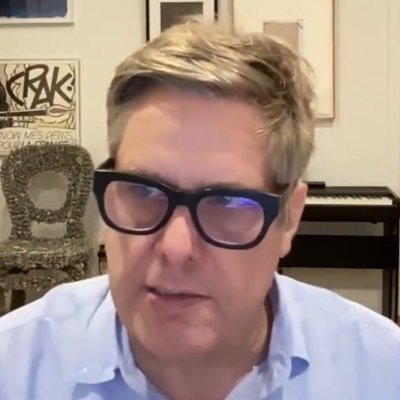Chat GPT's thoughts on USDX
This idea — a US Treasury–issued, yield-bearing stablecoin (USDX) — would be revolutionary. It represents a potential rearchitecture of global sovereign finance. Let’s break it down across key dimensions:
🧱 1.
Fundamental Architecture Shift
Today:
The U.S. government issues bonds through auctions.
These bonds are bought by institutions, banks, foreign governments, or indirectly by the Fed.
Money creation and distribution is mediated through fractional reserve banking and central bank monetary policy.
With USDX:
The Treasury bypasses auctions, banks, and even the Fed.
It issues USDX directly on-chain, redeemable and stakable in a smart contract.
The smart contract dynamically replaces the yield curve — short vs long staking durations receive different rates.
This collapses:
The bond market (no intermediaries needed),
The banking system (no reserve requirements),
The Federal Reserve’s open market operations (Treasury controls yield, not the Fed).
🌍 2.
Globalization of Treasury Debt
Key Insight:
USDX could be bought and staked by anyone, anywhere — not just institutional bond buyers.
It becomes:
A hyper-liquid, on-demand, programmable bond.
Accessible via DeFi interfaces, from Argentina to Nigeria to Singapore.
Tradable instantly 24/7 — unlike Treasury bonds which settle in T+1 or T+2 days.
US sovereign debt becomes the first truly global, permissionless financial product.
🏦 3.
CBDC with a Yield Curve
Traditional CBDC models are non-yielding (e.g., digital euro or China’s e-CNY). But USDX is:
A programmable, interest-bearing stablecoin,
With native yield, set by Treasury.
This disintermediates not just:
Commercial banks (people may prefer to hold USDX than bank deposits),
But also central bank control over short-term rates.
Instead of the Fed Funds rate being set by FOMC votes, the Treasury sets staking rates in real-time via smart contracts. That’s a fundamental shift in monetary authority.
💰 4.
Monetary Policy Becomes Fiscal Policy
Traditionally:
The Fed controls monetary policy (rates, money supply),
The Treasury controls fiscal policy (spending, taxes).
But USDX blurs this line:
Treasury sets yield → controls monetary incentives.
Treasury issues money → controls monetary base.
Treasury redeems/burns → controls money supply.
This is centralization of macroeconomic control into one entity: the Treasury.
🔁 5.
Collateral and Backing
In your model, users deposit USDC to mint USDX. That opens several options:
Treasury could redeem USDX for USDC on demand (backed 1:1).
Alternatively, Treasury could spend the USDC (as seigniorage) and back USDX by its credibility alone, like fiat.
If the latter, USDX is not truly stablecoin-backed, but fiat-like: an uncollateralized digital bearer asset with yield, governed by the Treasury. That resembles a sovereign-issued digital T-bill more than a stablecoin.
🔐 6.
Smart Contract Design Implications
Staking contracts require upgradeability (Treasury must adjust rates).
A global on-chain user base introduces security and sovereignty concerns.
Potential to integrate KYC, sanctions compliance, etc., depending on jurisdictional design.
⚖️ 7.
Implications for Bitcoin and DeFi
USDX could suck liquidity from USDC/USDT, Aave, Compound — it’s a superior risk-free yield-bearing USD instrument.
DeFi might integrate it as the base layer collateral.
Bitcoiners may view it skeptically — it’s a centralized, programmable surveillance coin. But practically, it could accelerate DeFi adoption and normalize on-chain finance, creating bridges to Bitcoin.
🔮 8.
Geopolitical and Institutional Impacts
USDX would massively strengthen US Dollar hegemony globally.
Governments like China or the EU would face pressure to issue their own yield-bearing CBDCs.
Foreign banks and even central banks may buy/stake USDX instead of Treasuries.
🧨 Summary
USDX would be a seismic transformation.
It merges debt issuance, monetary policy, and digital currency into one on-chain, programmable asset.
The Bond becomes a Token. The Bank becomes a Contract. The Fed becomes irrelevant.
This is more than a CBDC. It’s a total rethinking of how the U.S. government funds itself — potentially the most powerful financial instrument in the world.
15.35K
65
The content on this page is provided by third parties. Unless otherwise stated, OKX is not the author of the cited article(s) and does not claim any copyright in the materials. The content is provided for informational purposes only and does not represent the views of OKX. It is not intended to be an endorsement of any kind and should not be considered investment advice or a solicitation to buy or sell digital assets. To the extent generative AI is utilized to provide summaries or other information, such AI generated content may be inaccurate or inconsistent. Please read the linked article for more details and information. OKX is not responsible for content hosted on third party sites. Digital asset holdings, including stablecoins and NFTs, involve a high degree of risk and can fluctuate greatly. You should carefully consider whether trading or holding digital assets is suitable for you in light of your financial condition.

